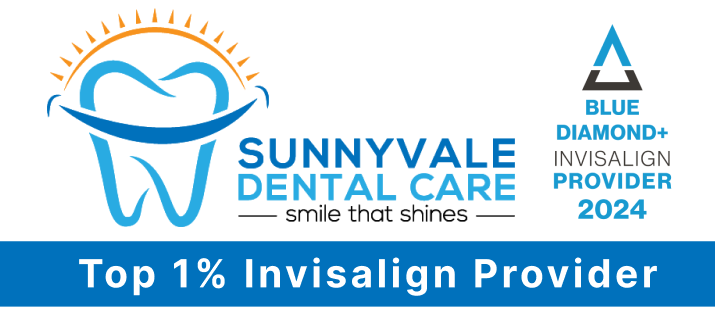A dental bridge is a false tooth, known as a pontic, which is fused between two porcelain crowns to fill in the area left by a missing tooth. The two crowns holding it in place that are attached onto your teeth on each side of the false tooth. This is known as a fixed bridge. This procedure is used to replace one or more missing teeth. Fixed bridges cannot be taken out of your mouth as you might do with removable partial dentures.
In areas of your mouth that are under less stress, such as your front teeth, a cantilever bridge may be used. Cantilever bridges are used when there are teeth on only one side of the open space. Bridges can reduce your risk of gum disease, help correct some bite issues and even improve your speech. Bridges require your commitment to serious oral hygiene, but will last as many as ten years or more.
Who is a candidate for dental bridges?
If you have missing teeth and have good oral hygiene practices, you should call Sunnyvale Dental Care Clinic today. If spaces are left unfilled, they may cause the surrounding teeth to drift out of position. Additionally, spaces from missing teeth can cause your other teeth and your gums to become far more susceptible to tooth decay and gum disease. Sunnyvale cosmetic dentist Dr. Gupta can discuss cosmetic dental treatment options with you.
Overview of the Dental Bridge Procedure
If you have a space from a missing tooth, a bridge will be custom made to fill in the space with a false tooth. The false tooth is attached by the bridge to the two other teeth around the space – bridging them together.How is the Dental Bridge Procedure Accomplished?
We will prepare your teeth on either side of the space for the false tooth. You will be given an anesthetic to numb the area, and the cosmetic dentist will remove the area of each abutment (teeth on either side of the space) to accommodate for the thickness of the crown. When these teeth already have fillings, part of the filling may be left in place to help as a foundation for the crown.The dentist will then make an impression, which will serve as the model from which the bridge, false tooth and crowns will be made by a dental laboratory. A temporary bridge will be placed for you to wear while your bridge is being made until your next visit. This temporary bridge will serve to protect your teeth and gums.
Your cosmetic dentist may have you use a Flipper appliance. A Flipper is a false tooth to temporarily take the place of a missing tooth before the permanent bridge is placed. A Flipper can be attached via either a wire or a plastic piece that fits in the roof of your mouth. Flippers are meant to be a temporary solution while awaiting the permanent bridge.
On your second appointment, the temporary bridge will be removed. Your new permanent bridge will be fitted and checked and adjusted for any bite discrepancies. Your new bridge will then be cemented to your teeth.
There are Three Types of Dental Bridges
Traditional Fixed Bridge
A dental bridge is a false tooth, known as a potic, which is fused between two porcelain crowns to fill in the area left by a missing tooth. There are two crowns holding it in place that are attached onto your teeth on each side of the false tooth. This is known as a fixed bridge. This procedure is used to replace one or more missing teeth. Fixed bridges cannot be taken out of your mouth as you might do with removable partial dentures.Resin Bonded Bridges
The resin bonded is primarily used for your front teeth. Less expensive, this bridge is best used when the abutment teeth are healthy and don’t have large fillings. The false tooth is fused to metal bands that are bonded to the abutment teeth with a resin which is hidden from view. This type of bridge reduces the amount of preparation on the adjacent teeth.Cantilever Bridges
In areas of your mouth that are under less stress, such as your front teeth, a cantilever bridge may be used. Cantilever bridges are used when there are teeth on only one side of the open space. This procedure involves anchoring the false tooth to one side over one or more natural and adjacent teeth.Advantages & Disadvantages of Dental Bridges
Advantages of dental bridges
Bridges are natural in appearance, and usually require only two visits to your dentist. If you maintain good oral hygiene, your fixed bridge should last as many as ten years or more.Disadvantages of having a dental bridge
It is common for your teeth to be mildly sensitive to extreme temperatures for a few weeks after the treatment. The buildup of bacteria formed from food acids on your teeth and gums can become infected if proper oral hygiene is not followed.
Learn more when you visit Sunnyvale Dental Care Cosmetic Office. Call Sunnyvale Cosmetic Dentist Dr. Gupta at 408-720-0900 to schedule a consultation today!

